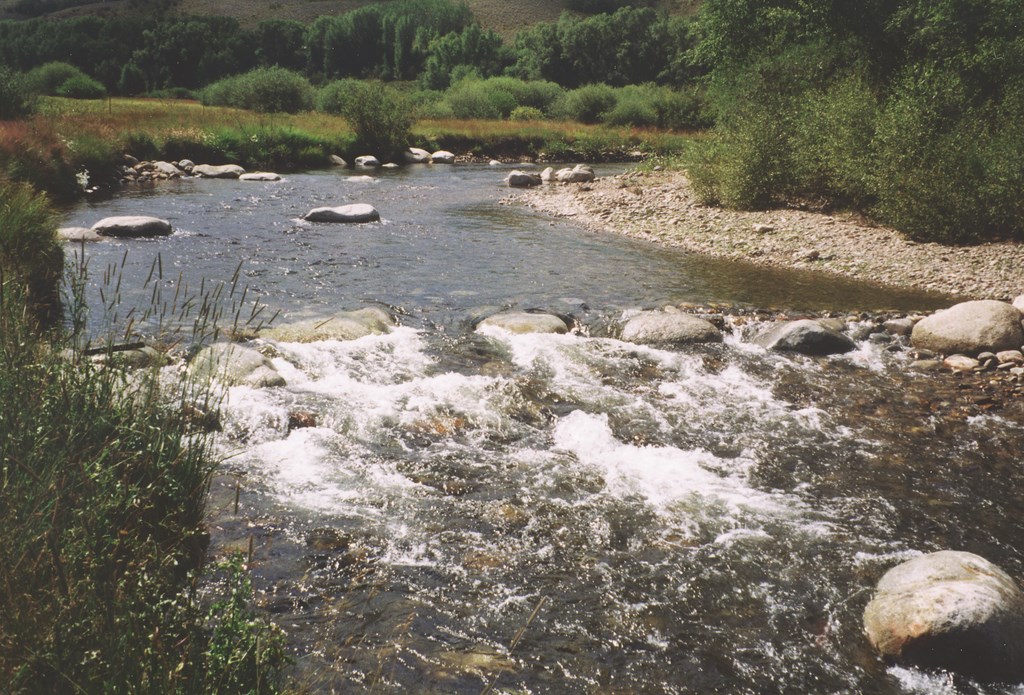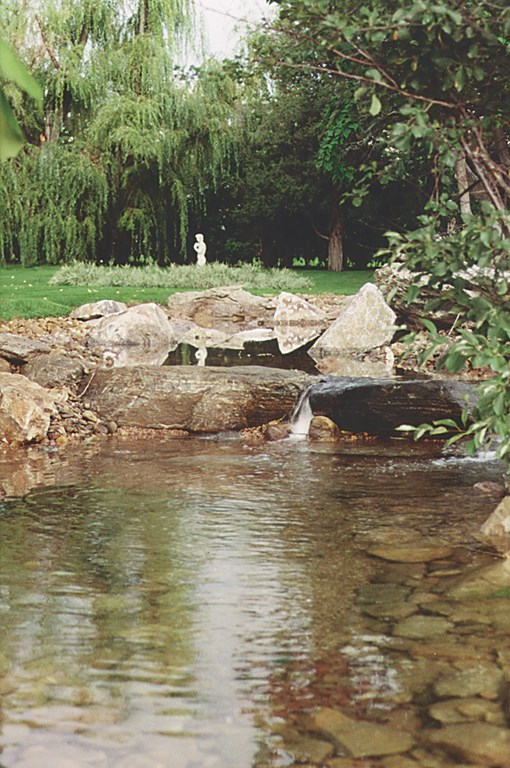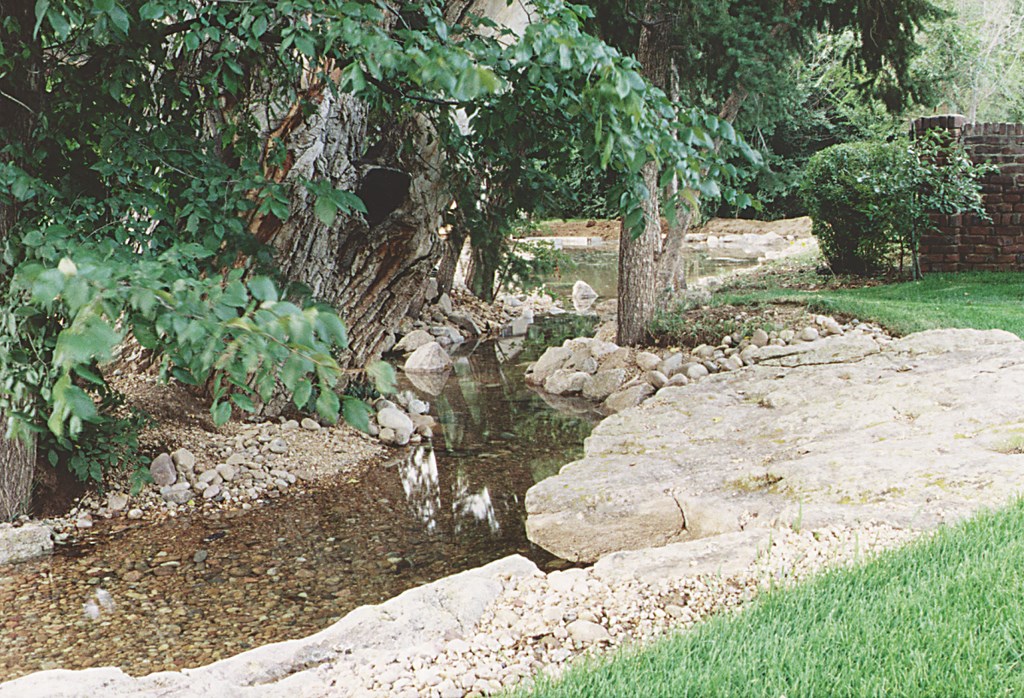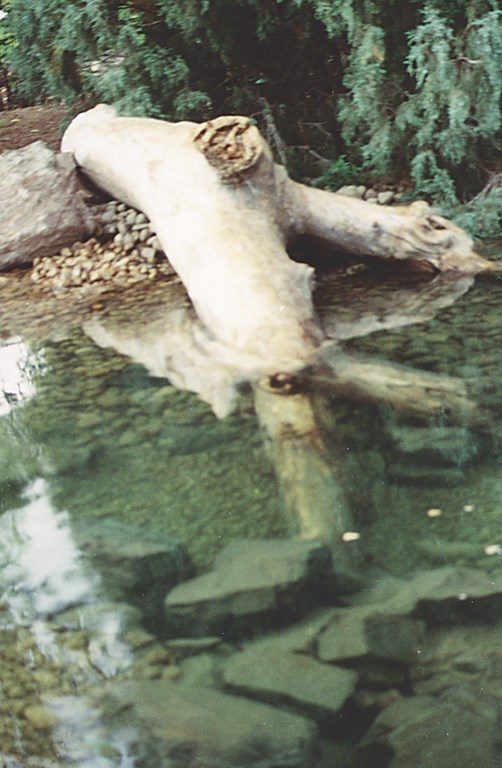The Soul of the River

I live in the Rocky Mountains of Colorado on the banks of the Arkansas River – a beautiful place and a beautiful river. Within easy reach of my home, the Arkansas flows swiftly in certain spaces, cascading over rugged terrain, then slows down in others to form deep pools that reflect brilliant skies and create a diversity of aquatic habitats.
As I watch the river flow, sometimes I can’t help thinking back to my days at a trout hatchery and recognizing that if we’d had such a volume of moving water available to us in our operation, we could have produced millions more pounds of healthy fish. I’m simply amazed by the power and complexity of the water I watch, and especially by its ability to generate life.
At the most basic level, all rivers do is direct a volume of water down a grade of some kind, creating a tremendous amount of energy in the process. Where that volume of water is great enough and swift enough, humankind has learned to turn this abundance of energy into hydroelectric power. Nature also uses that energy to its own purposes – and in awe-inspiring ways, as a glance at the sculptural qualities of a place like the Grand Canyon demonstrates or as any trout-fishing enthusiast can tell you.
Despite all that power (or perhaps because of it), the life cycles of rivers can be delicate and their capacity to generate life can, for various reasons, be diminished. What I do in my work is give the generative processes a hand by figuring out ways to unleash the energy carried by the water’s flow and turn it into fish.
GREEN TRANSITIONS
As I mentioned above, I took my first steps along this path in the hatchery business.
Traditionally, hatcheries have relied on concrete construction to provide artificial environments in which the fish are reared. Years ago, however, it occurred to me that this was probably not the most efficient or effective approach to growing a “wild-like” fish, so we started tearing out the concrete and replacing it with natural earthen structures.
After a period of years, we were designing passive methods for changing energy into fish. We figured out simple ways to harness the head pressure in a river (its available energy) to trap free nutrients in protected habitats that developed forage for fish.
That seems pretty straightforward on a conceptual level, but the truth is that this is complex stuff that requires an understanding of hydrology, forage management and the life cycles and spawning behaviors of trout. Different-size organisms feed different sizes of fish, and every body of water has different environmental conditions that affect the relationships among nutrients in the water, bacteria, invertebrate populations and, ultimately, the fish.
| WORKING IN THE WILD: In our work on a long stretch of the Williams Fork River in Colorado, our aim was to slow the river down enough to encourage fish to stay around long enough that kids at a camp for terminally ill children could drop their lines and catch some fish. We added tons of rock and a variety of subsurface features and widened the river in places to slow the flow and build up nutrient levels. |
These days, I use many of the techniques I learned in the hatchery business to restore and beautify natural rivers. Ours are big jobs that take months or even years to complete. In the past decade, our firm has tackled perhaps a dozen projects – each one different and rewarding, and each one requiring patience and a willingness to observe and study the natural environment.
In one project, for example, the challenge may be to find ways capture leaf material that’s fallen into the water so it can decompose and feed the various invertebrate groups that in turn feed different species of fish. In another, there might be too much nutrient material in the water, and the challenge is figuring out how to remove or use it.
In yet another type of project, the challenge may be to decrease the negative influence of localized insect control on the water by finding a means of reducing insecticide runoff into the flow path.
I’ve also worked on multi-phase projects in which we’ve installed large gravel-filtration systems on ponds associated with rivers to remove abundant organic material – and put the diverted water to use in irrigating and restoring nearby fields that needed re-vegetation. In a situation such as that one, nutrients in the water are used to fertilize plants that provide habitats for terrestrial invertebrates, amphibians and birds instead of limiting fish populations.
REPAIR AND REBUILD
The repair and rehabilitation of streams encompasses many specific tasks, but the work generally can be broken down into two broad categories: First, we create habitats where indigenous species of aquatic life can flourish. Second, we make the work look “natural,” both in the water and beyond.
This division of functions is important from the standpoint of understanding what we’re doing, but it’s not always so clear-cut: Quite often, things we do on jobs fall into both categories. If there is one underlying rule it is that form almost always follows function: A boulder habitat structure in a stream is functional by providing protected habitats for trout, but the form or aesthetic appeal is directly related to what it does. It creates a diversity of stream velocities or breaks up the monotonous nature of a stream.
|
Leaving Well Enough Alone When it comes to landscaping riverbanks, most of our work is aimed at re-vegetation. We use only indigenous plants and often end up removing certain plants that are intruding on more natural vegetation. For the most part, however, our goal is to leave the edges alone. In this sense, what we don’t do can be every bit as important as the steps we take. In our work, we most often choose to encourage nature and alter things only to enhance existing natural processes. We make adjustments that allow the natural setting to take over and do the landscaping work for us. That’s not to say that our general approach is minimalist or small scale. In some cases, we may end up adding 40 or 50 semi loads of rock to an area – but in ways that augment what nature is doing with the energy in the stream or river. Understanding where the balances are between taking action and leaving well enough alone is one of the sublime challenges of this type of work. There are, however, certain lines we will not cross: We’ll never try to achieve our ends by introducing chemicals, for example, be they artificial nutrients or toxic chemicals such as algaecides. Nor will we transplant animal or plant species into unnatural settings. This in particular is a measure that can lead to unexpected results that will almost always be negative. Bottom line: We do not rip or tear or shred. Our goal is to work so seamlessly with nature that it will take over and do the work for years after we’ve gone away. Yes, we’ll feed fish for a time to encourage them to stay in an area, but we’ll only do so until the cycle that that will naturally feed that species becomes established. — H.H. |
Consider the issue of the speed of the water. One of the things you see in natural streams is variation in speeds. As a result, we spend a lot of time managing the rate of flow: There will be areas where the flow may need to be sped up by clearing debris or rock structures, while in other areas, we may want to build rock structures or augment existing structures in order to slow things down and create pools in which fish can rest, for example.
In so doing, we’re working toward habitat creation and naturalistic appearance, simultaneously and inextricably.
In other words, varying speed of flow in a stream will give the work a more natural appearance, because that’s the way that nature does things, at the same time it will enhance the function of the entire system. Another example might be plantings along the banks: These additions enhance the natural appearance of the stream, and at the same time might be necessary to stabilize the slope of the bank or provide a source of nutrients by virtue of plant material falling into the water.
When you get down to it, many of the key variables we’re handling tend to relate either to the level of nutrients in the water (too much or too little) and the speed of the water (too fast or two slow). But we also address issues of human interaction with the water, temperature stabilization and the interaction the river has with associated aquifers and other bodies of water.
Again, these are extremely interrelated outcomes, and how you achieve the desired effects on a specific project will always be different, often in stimulating ways.
CARE AND FEEDING
Our approach to stream restoration involves a great deal of site assessment and planning.
Before we even begin “planning” in specific terms, we’ll spend time on site studying the stream and the surrounding environment. We’ll look at the fall of the stream in terms of drop versus distance; we’ll quantify width and depth and flow rates; we’ll track existing fish populations, nutrient levels and any man-made structures that may be influencing the health of the stream. All these components are examined over time and taken into careful consideration as we develop our restoration strategy.
Once we determine what should happen within the system to achieve the desired outcome, we can go about making specific plans. In doing so, we have a number of tools at our disposal that can be used in a variety of ways.
For example, we can grade a portion of the stream- or riverbank to slow down or speed up the flow. This can involve widening the streambed in places – or changing its depth. On some projects, we’ll look for ways that we can redirect the flow by adding wooded material such as a “fallen” log, or enhancing or reducing rock structures. In many cases, these structures again serve the purposes of managing rate of flow, providing locations where nutrients can accumulate and enhancing the aesthetics.
| ON APPROPRIATE SCALES: Not all of the work is on big waterways. In some cases, we’re called in to make adjustments to small streams – as in the two projects seen here, where in one case we created a pond along a stretch of a natural stream to create a fishing hole for a handicapped angler (left and middle), and in another, where we transformed what had once been a drainage ditch into an environment suitable for trout (right). |
In terms of creating nutrient resources, one of the most useful tools we have at our disposal is a gabion basket. These wire-mesh baskets come in various shapes and sizes and can contain different materials. At times, we’ll use rocks of differing particle sizes to increase surface areas that bacteria and small aquatic animals can colonize. Or we’ll use formed diatomaceous earth or vermiculite, depending on the type of habitat we want to encourage. Without the structure provided by the baskets, most of these materials would wash down the stream, and there would be no opportunity to for habitat development.
Gabion baskets are typically used in situations where you want to add or trap nutrients, but they can also be used to remove certain organisms. Barley straw, for example, is a wonderful natural algaecide: In situations were we want to control large algal blooms in an area, we may submerge several baskets filled with the material to get the job done.
With or without baskets, understanding what kind of material will remain stationary in the water’s path at a particular flow rate is very important. If an improvement structures is to remain stream-stable, it has to be able to withstand high water and also remain functional during low flows. Equally important is consideration of how a structure affects stream banks downstream or on the opposite bank. Placement of spawning gravels in an area with too much or to little stream velocity, for example, will render the structure useless.
CASE BY CASE
As I hope the above suggests, each of our projects is very specific to the situation – so let’s take a look at a couple of projects by way of illustrating what can be accomplished in our restoration projects.
One of the largest we’ve done to date was on the Williams Fork River, where we restored a mile-and-a-half stretch of beautiful riparian area that ran through a wildlife ranch for terminally ill children. The problem we faced was a lack of non-migratory rock in the river channel: The entire river section, with the exception of two pool areas, was one long riffle. The river ran so swiftly that there were very few areas for fish to stay in the stream channel, and the problem was compounded by the fact that the stream banks were being actively eroded.
In short, we had one long stretch of stream with no fish.
|
Natural Replication I realize that many of the people reading WaterShapes will never become involved in a natural restoration such as those described in the accompanying article. Many of you will, however, endeavor to replicate nature in man-made ponds and streams. Our work in restoring natural rivers has occasionally led us to work on man-made projects. As shown here, for example, we once built a 900-foot stream that wrapped around a private residence in a project that included four ponds and several subsurface rock structures that served as places where nutrients and forage animals could develop.
The water is all re-circulated using two 10-horsepower pumps that provide the requisite energy that we would otherwise have found in the natural flow of a river or stream. There are places where the water moves fairly quickly and others where it slows down. We used a range of rock materials to provide a balance of habitats for plants, forage animals and fish. It’s all familiar territory, right down to the observation that a key to managing life in any body of water is understanding that the size of the stream relates to the amount of life that it can optimally support. In this case, we designed the system to support between 2,000 and 5,000 pounds of trout, year ’round. No matter the type of project, I believe it’s critical not only to study the aesthetic beauty of nature in attempting to mimic it, but to also gain a clear understanding of the processes that support life within a body of water. Doing so will better enable you to create truly natural streams that will remain healthy and beautiful over the long haul. — H.H. |
The owners of the property wanted us to create areas in which the kids could fish, safely and easily. To accomplish this, we added large, stream-stable boulders to create pools; individual holding habitats; detritus traps; and spawning, fry and fingerling areas. (Some regulatory restrictions prevented us from using gabion baskets in this section of the river.)
The river also interacts with a large riparian aquifer that is critical to the ecosystem of the entire area. This interaction is a positive for any living waterway, because the aquifer stabilizes water temperatures and seasonal high and low flows, which is important in establishing and maintaining fish habitats. We found, however, that the river bottom was “cemented” to a large extent with fine sands and silts, which was reducing the water exchange with the aquifer.
To stabilize the situation, we created infiltration areas where the water could get into the aquifer by building a series of underground channels filled with gravel. Before long, temperatures along the restored waterway had stabilized: Several species of invertebrates quickly reestablished themselves, and young fish were recruited to the spawning areas.
During the initial feasibility study we conducted, it was observed that a large upstream irrigation project was removing half to two-thirds of the river’s water. (There were times you could actually watch the water level drop.) To counter this effect, we built some deep pools where fish could stay comfortably during times when the water’s level decreased. This also made for several good fishing spots!
On this project, accommodating the human element was obviously important. We built several pathways to fishing spots that were accessible to kids in wheelchairs, for example. We also built a ranch road that enabled vehicles to come within a few feet of these access points. As the project neared completion, I watched a child in a wheelchair fishing off of a small pier we’d built. The smile on his face as he reeled in a five-pound rainbow trout is hard to describe – and impossible to forget.
LESS OR MORE
Other projects we’ve tackled haven’t been quite so extensive, but they’ve all been rewarding.
In one of these projects, we took a small stream on property owned by a family that wanted to provide a place for a handicapped relative to fish. It was a marginal little stream that was moving way too fast to support any kind of population of large fish. Rather than try to dramatically widen the stream, we used gabion baskets to develop food supplies for large forage organisms that would in turn feed bigger fish.
To accommodate the large fish, we crafted a pond in the flow path of the stream and arranged for easy access in and out – a simple project compared to the Williams Fork River job, but one that provided no less satisfaction to those seeking to use the stream. And it turned out to be a very nice place to fish.
What this project illustrates is that with even when we’re working with a limited amount of energy in terms of water flow, we can create wonderful, naturalistic resources by working with nature. This sense of balance and harmony with natural processes is something that I believe is missing in many man-made projects.
There’s no reason why this gap should exist. Rivers and streams are dynamic, powerful engines of creative force: In learning how to harness that energy and direct it toward a specific result, we unlock natural beauty instead of losing ourselves in the struggle to replicate it!
Hal Hagen is founder and president of Aquatic Alternatives, a Buena Vista, Colo., firm dedicated to designing and creating natural environments suitable for large populations of fish. Hagen has more than 20 years’ experience in the fishery industry and has owned and operated fisheries in Montana and Colorado. He founded Aquatic Alternative in 1990 to develop alternative methods for creating and controlling “wild-like” populations of trout and other fish. He has served on the board of directors for the Colorado Trout Growers Association and has presented several papers at meetings of the American Fishery Society as well as at conferences held by Environmental Conservation Engineers.



















